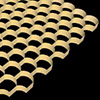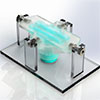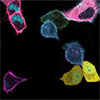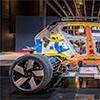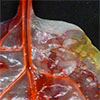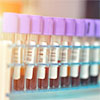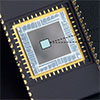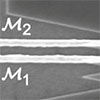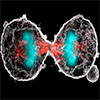Nov 30, 2021 (Nanowerk News) A new study from Swansea University has introduced a framework to calculate the material properties of a new class of two-dimensional curved hexagonal lattices that could be used in the production of improved mechanical metamaterials found in bio-engineering, stretchable electronics, impact absorption and soft robots....
Synthetic tissue can repair hearts, muscles, and vocal cords
Nov 30, 2021 (Nanowerk News) Combining knowledge of chemistry, physics, biology, and engineering, scientists from McGill University develop a biomaterial tough enough to repair the heart, muscles, and vocal cords, representing a major advance in regenerative medicine (Advanced Science, "Injectable, pore-forming, perfusable double-network hydrogels resilient to extreme biomechanical stimulations"). “People...
Biosensor barcodes identify, detail ‘chatting’ among cancer cells
Nov 30, 2021 (Nanowerk News) Ever since the first barcode appeared on a pack of chewing gum in 1974, the now-ubiquitous system has enabled manufacturers, retailers and consumers to quickly and effectively identify, characterize, locate and track products and materials. In a paper first posted in the journal Cell ("Deciphering...
Life cycle assessments reveal electric vehicle roll out hazards
Nov 30, 2021 (Nanowerk News) During COP26, Volvo admitted increased production emissions in its C40 Recharge model, underlining the need for life cycle assessments (LCAs) to help battery development. Extending LCAs beyond greenhouse gas emissions to resource scarcity and social issues already suggests that the world needs more than just...
New nanomedicine drug testing system to help cut down on animal testing
Nov 30, 2021 (Nanowerk News) Researchers from ITMO’s SCAMT Institute have developed a new nanomedicine testing system based on plant leaves. This new solution will make it possible to significantly cut down on animal testing. The system was described in Nano Letters ("Bioinspired In Vitro Brain Vasculature Model for Nanomedicine...
3D printing of blood plasma may speed up wound healing
Nov 30, 2021 (Nanowerk News) New research by RCSI University of Medicine and Health Sciences suggests that effective wound healing may be aided by replicating a crucial component of our blood. The finding, published in Advanced Functional Materials ("3D Printed Scaffolds Incorporated with Platelet-Rich Plasma Show Enhanced Angiogenic Potential while...
How to turn ultrathin silicon black?
Nov 30, 2021 (Nanowerk News) Silicon is the basic material that is used in our smart phones, in optical sensors, or in solar cells on our roofs. It is a major outstanding challenge that silicon absorbs incident light only weakly, especially in the red part of the visible spectrum. Recently,...
Combining two cognitive computing nano-elements into one
Nov 30, 2021 (Nanowerk News) Researchers at Tohoku University and the University of Gothenburg have established a new spintronic technology for brain-inspired computing. Their achievement was published in the journal Nature Materials ("Memristive control of mutual spin Hall nano-oscillator synchronization for neuromorphic computing"). Sophisticated cognitive tasks, such as image and...
Scientists reveal ultrafast exciton dissociation mechanism in 2D perovskites
Nov 29, 2021 (Nanowerk News) A research group led by Prof. JIN Shengye from the Dalian Institute of Chemical Physics (DICP) of the Chinese Academy of Sciences revealed an ultrafast and high-yield polaronic exciton dissociation mechanism in two-dimensional (2D) perovskites. This study was published in Journal of the American Chemical...
Cells’ replication of DNA is more error-prone in microgravity
Nov 29, 2021 (Nanowerk News) On 22 May 2019, scientists from Queen's University boarded a modified Falcon 20 aircraft at Ottawa airport. Scheduled was a ‘vomit comet’ flight, where the plane repeatedly climbs to 8km in a steep parabola, alternating with a descent in freefall. During freefall, at a rate...

